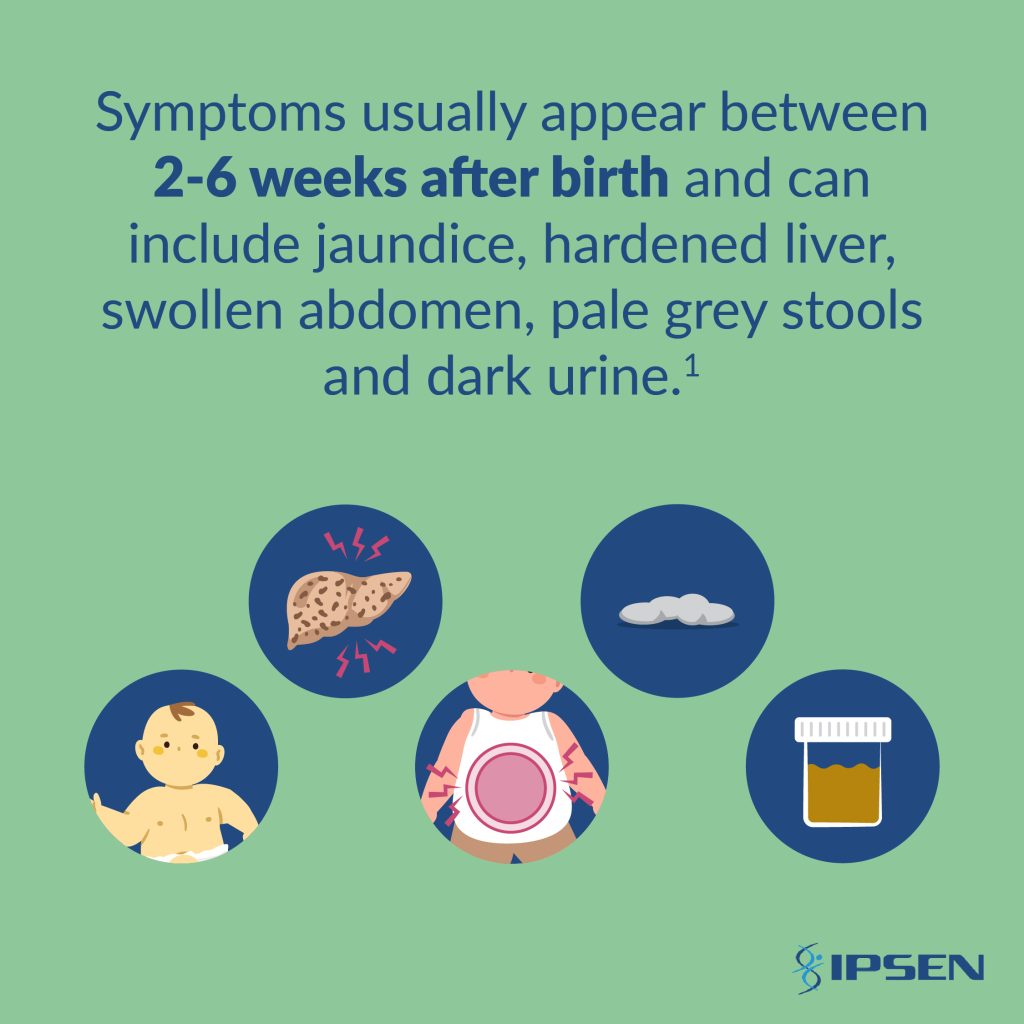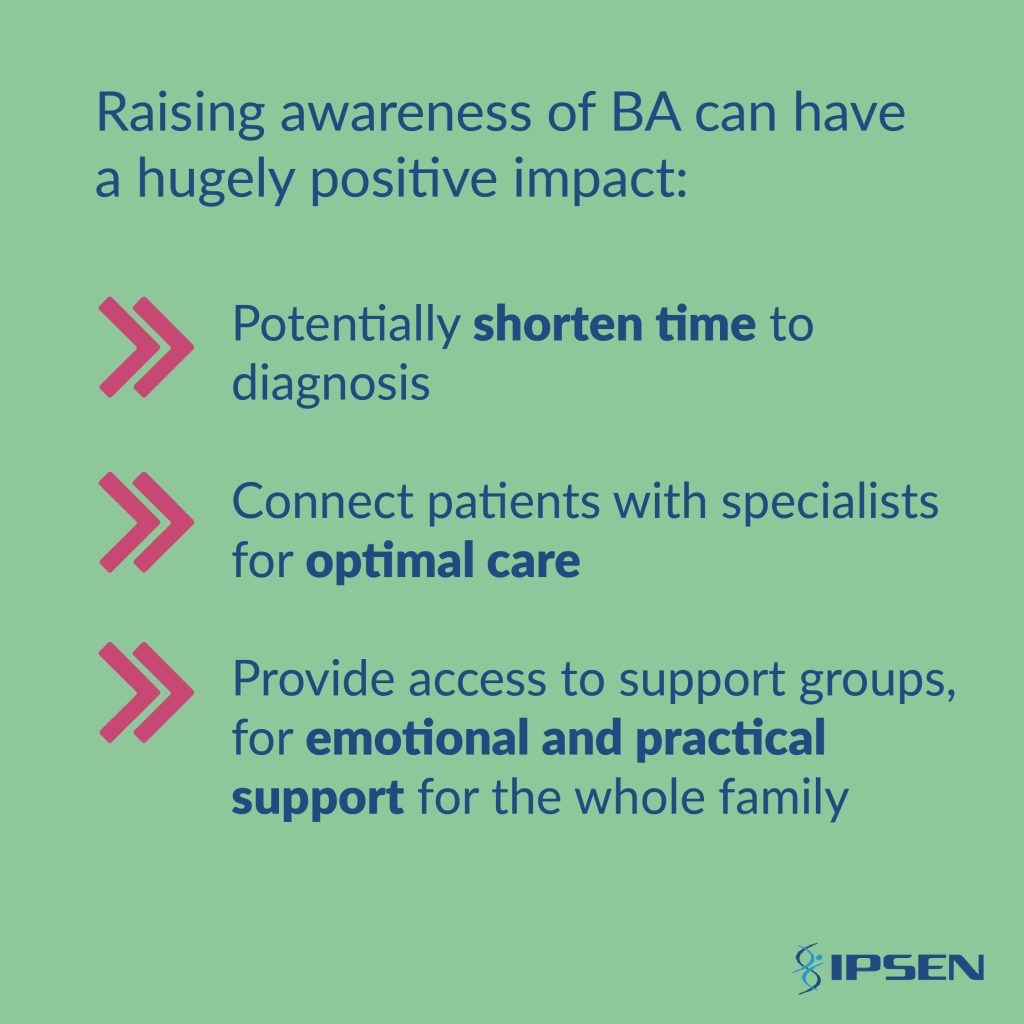Advocating for babies with Biliary Atresia

Biliary atresia (BA) is a rare liver disease that usually appears in the first month of a baby’s life.1 This BA Awareness Day, we’re proud to support BARE to help raise awareness of this condition.
Biliary Atresia (BA) is a rare liver disease that usually appears in the first month of a baby’s life.1 In this disease, the bile ducts in the liver may not develop as expected, or become obstructed shortly after birth, causing harmful substances such as bile and toxins to build-up and damage the liver.2,3 A surgical procedure, called Kasai, can be performed, ideally within the first two-three months of life, to allow the bile to drain directly from the liver to the intestines, which when successful means the child can keep their own liver for several years. A liver transplant may still be needed later in life.4
1 December is BA Awareness Day, an important initiative led by the patient organization BARE. Join us in raising awareness of the signs, symptoms and impact of this rare liver disease on families all over the world. To learn more, scroll down or visit the BARE website.
What are the first signs and symptoms of BA?
BA can be difficult for parents, caregivers or even healthcare professionals (HCPs) to identify straight away. As with many cholestatic liver diseases, the build-up of bile and toxins can cause jaundice (yellowing of the skin and eyes), which often overlaps with the harmless jaundice seen in newborns during the first few weeks of life.1 Jaundice that persists beyond the first two weeks, in addition to dark urine and pale stools are common symptoms of BA.5
What causes BA, and how is it managed?
The cause of BA is unknown, however up to 20% of babies born with BA are also born with problems with other organs, such as heart defects or issues with their spleen, suggesting the potential for a genetic influence.1,6
Surgical intervention remains the mainstay of treatment for BA, after which there will be long-term follow-up with doctors and other healthcare professionals to manage and monitor the child’s health. A liver transplant is only considered when other treatments are ineffective. The aim of liver transplantation is to restore the child to good health and is eventually needed in up to 80% of children before the age of 20 years.7
Looking to the future
Raising awareness of BA can have a huge impact – shortening the time to diagnosis can improve the success rate of surgical intervention, put patients in the care of specialists who can help manage the condition and provide access to support groups, which can provide emotional and practical support for the whole family. At Ipsen, we advocate for, innovate and aim to secure positive changes for those impacted by rare cholestatic liver diseases such as BA. Our focus on liver disease is rare.




Visit BARE’s website to learn more about Biliary Atresia (BA)
- Siddiqui AI and Ahmad T. 2024. Biliary Atresia. StatPearls. Treasure Island (FL): StatPearls Publishing.
- Lendahl U, et al. 2021. Biliary Atresia–emerging diagnostic and therapy opportunities. EBioMedicine. 1;74.
- National Organization for Rare Disorders. Biliary Atresia. Available at: https://rarediseases.org/rare-diseases/extrahepatic-biliary-atresia/. Accessed: November 2024.
- He L, et al. 2021. Biomarkers for the diagnosis and post-Kasai portoenterostomy prognosis of biliary atresia: a systematic review and meta-analysis. Scientific reports. 3;11(1):11692.
- BMJ Best Practice. Biliary Atresia. Available at: https://bestpractice.bmj.com/topics/en-gb/739#:~:text=Biliary%20atresia%20should%20be%20suspected,(1%20mg%2FdL). Accessed: November 2024.










